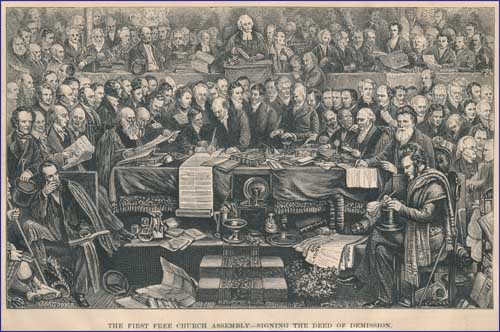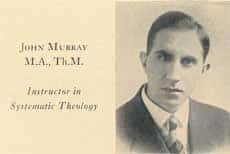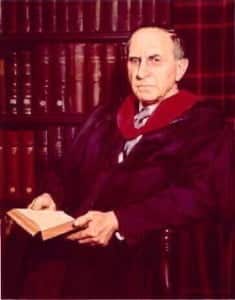A Better Possession, and A Lasting One
Barbara Cunningham had all of the characteristics of a powerful family by her ancestry. But of far more importance than these temporal goods was that her ancestors were all warm supporters of the Protestant Reformation of Scotland.
Continuing in that rich biblical tradition, Barbara Cunningham married William Muir of Caldwell in 1657, thus enabling her to be known as Lady Caldwell. Her husband, like her ancestors, was zealous in his adherence to Presbyterianism, and especially to those who had been ejected from their parishes in 1662. Even though it was considered traitorous to do so, he abstained from attending the churches where Anglican priests now were in charge. Cited to appear before the civil authorities to explain his absence, the date was delayed time and again. Of course, this was of the Lord. When Covenanters began to take up arms to defend their faith, William Muir raised a troop of fifty neighbors to ride to the area around Pentland Hills to help their cause. But a force of government troops cut off their approach with the result that the small band was scattered. Forced to hide himself and eventually flee, William Muir eventually made his way to Holland.
Soon the weight of the opposition fell upon his wife, Lady Caldwell, and her four children, three of them female. She lost all of her and their property which was given to the general who had fought the Covenanters at Pentland Hills. Lady Caldwell joined her husband in Holland with her family. While there, they were allowed to worship God along with all the other Scottish exiles. In a short while however, her husband died in the faith. Lady Caldwell returned to Scotland with her family, hoping that the length of time being absent would make a difference. But it did not. The property still was in control of the anti-Covenanter forces, even taking the new furniture which Lady Caldwell had bought to make a new home. She was still destitute in her beloved homeland.
There is a wonderful paragraph on page 4 of her story in the Ladies of the Covenant. It states that “she did not distrust in adversity the God whom she had trusted and served in prosperity. Confiding in his promises, she believed that He would provide for her and hers; and possessing too much self-respect to be dependent for the means of subsistence on the bounty of others, she, with her virtuous children, set themselves diligently to the task of supporting themselves by the labor of their own hands.”
Suddenly, without formal charges or even a trial, she, along with her four children, were arrested. Supposedly, a neighbor had observed a non-conformist minister lead a worship service in her home. On the authority of the provost of Glasgow, Scotland, Lady Caldwell was sent on May 22, 1683, along with her twenty year old daughter, Jean, to prison, and not any prison, but the notorious Castle of Blackness.
The daughter began to suffer health problems due to this cruel punishment after six months, and was set free after an appeal in 1684. Her mother would serve another two years and eight months. During this time, her second daughter Anne would died of Yellow fever. Finally, after this time, she was set free. After William and Mary came to the throne, all of her property and rights were restored to her.
Words to Live By: Like the early Jewish Christians as described in Hebrews 10:34b, Lady Caldwell “accepted joyfully the seizure of property, knowing that (they) had a better possession and a lasting one.” A question to ponder! Would we be like these first century Christians and like Lady Caldwell if such a calamity would happen to us, losing all of our possessions for the sake of the faith delivered unto the saints? It is happening now in our blessed land! Let our prayer be to the God of all grace to help us to see those things which are eternal, and accept joyfully the loss of those things which are temporal.



